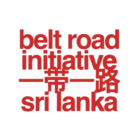Noelia is having an amazing view at the Hideout Wood Cabins (@hideoutella) Ella Sri Lanka, the photo captured by Victor Durán. Noelia and Victor travelled Sri Lanka this season, and said that “It’s not a difficult decision to visit Sri Lanka in this winter”, for more amazing photos follow Noelia (@noelia.bbe) and Victor (@duran__v) on Instagram.
Three Tourism Strategies for Sri Lanka this Season.
The world officially entered the Post COIVD era, and by now many nations are getting back to normal operations and removing travel restrictions, However, the Ukraine-Russian conflict has shifted the global dynamics to new challengers. Throughout the years global market shifted during such unrest in regions, and as the Sri Lankan energy crisis was partly affected due by the ongoing global crisis, many more nations will be drawn into financial and geopolitical crises in coming months. The unrest in Ukraine, economic sanctions on Russia by the western alliances, and the Europe dependency on Russian Gas and Oil has led to a new greater challenge globally. Many analysts say that the coming winter in Europe will be a big challenge with a huge price surge in electricity, domestic heating and inflation. In China, the Zero COVID policy will be lifted in by end of this year, which will allow Chinese travellers freely travel after three years. However, during each crisis, there is a side that can bring economic benefit for the ones who are more skillful to analyze and understand the metrics. Tourism alone bring over USD500 million per month and annually over USD 5 to 6 billon for Sri Lanka, but this is just the bare minimum and the Sri Lanka tourism market has the potential to develop two or three times bigger. So below are three important tourism strategies with a twist of domestic and geopolitical insights which can allow Sri Lanka to trump over its crisis.
1. European Energy Crisis:
The centric tourism strategy for Sri Lanka in this coming season is the European Energy crisis. The number of analyses published and identified that there would be an over 300% hike in gas prices which will skyrocket the rent cost with unprecedented inflation due to Russia blocking the gas lines to Europe. Sri Lanka should focus on digital nomads, fresh graduates, remote work force in Europe, etc who are averagely paying over USD 1,000 for apartments, and middle-class families working in metropolitan areas who are able to extend the European winter on a tropical island at a much lower cost than living in Europe with high food, gas, and interlinked expanses. Sri Lanka would be an ideal location to spend the European winter bypassing the high inflation in Europe and with proper marketing and policy, it can bring a wave of travellers rerouting to Sri Lanka.
Moreover, high and middle income families might also consider traveling this winter due to the uncertainty of gas supply, and part from that due to visa and other restrictions Russian travellers will also reschedule this coming winter.
2. the Far-East Russia:
Far East Russia is one of the main untapped tourism markets in the region, as most Russian tourists coming to Sri Lanka are from the European side of Russia. Far East Russia is highly underrated globally. However, India (which runs the region’s top intelligence) already established its diplomatic mission in the far East Capital Vladivostok Russia. Moreover, in 2019 Indian Prime Minster Modi, in the presence of Russian President Vladimir Putin, unveiled the ‘Act Far East’ policy to boost India’s engagement with Russia’s Far East region of Russia during the 5th Eastern Economic Forum (EEF), this was the first time in post-colonial era a developing nation extended financial support to a major global power. This identifies the strategic importance of Far East Russia. Also, the 7th Eastern Economic Forum 2022 will take place on 5–8 September 2022 in Vladivostok on the Far Eastern Federal University (FEFU) campus which is a pivotal forum for Sri Lanka to attend.
The Far East is not only impotent for tourism, but the Port of Vladivostok will also be a major port in the coming century due to the melting of icecaps in the Arctic , and the Russian City will be linking the North Shipping Route to the East-West Shipping Route by sea and will link to Europe by Railways.
Sri Lanka tourism is untapped in the Far Eastern region where major economies such as South Korea, Japan, and Far East Russia could be a major contributor to Sri Lankan tourism.
3. China Two Sessions Meeting:
Anyone familiar with China knows how importance of the upcoming Two Sessions Meeting, this meeting is the most centric gathering of the Communist Party of China and the China Government and will outline China’s ambitions, growth, and other important statistics for the future. The meeting is scheduled to be held in the coming months and many analysts say that after the meeting the Chinese government will be in a politically flexible position to opening its borders to the outside world which was closed since the 2019 COVID.
China is a major power and no global nation disregard China when it comes to its economic power and its trade capacity. Even the nations which criticise China as, Europe Union (where 35 nations signed the China’s BRI which includes 18 EU member states), the U.S (China is the biggest trade partner and biggest holder of U.S treasury bonds, and U.S government debt), Australia (China is the biggest trade partner of Australia), Japan (China is the biggest trading partner of Japan) have clearly strategically aligned to China for its economic benefits, while China is the biggest trading partner for over 120 nations globally.
However, on the basis of tourism, an average of 150 million Chinese travelers spend up to US$255 billion yearly on sightseeing. China’s outbound tourist market to Sri Lanka alone can bailout all Chinese debt in less than one year if work out a promotional plan with China’s provincial governments. It’s not effective for the Sri Lankan mission in Beijing to coordinate with the central Chinese government on tourism, as the focus and the mission of China’s Central Government in Beijing are different.
Sri Lankan authorities should align with provincial govermants and Mayors of China’s City Tier System, because Mayors are the next in line to enter the politburo in Beijing, so they are more active to show their merit and capacity with effective results. The best example is the former Chinese President Jiang Zemin’s visit to Colombo as the Mayor of Shanghai in 1985s. As the mayor, his mission in Colombo was to study the “1978 Greater Colombo Economic Commission”. On this return to China Major Jiang Zemin converted the ideas and policies from Colombo Greater Economic Commission to then Chinese Premier Dang Xiaoping, which Deng used to implement his Free Trade Zone’s policy in cities like Shenzhen and later on Mayor Jiang Zemin succeeded Dang Xiaoping as the President of China.
Today Shenzhen is China’s third-largest city by GDP surpassing over US$400 billion, translation of which, after studying Colombo Economic Commission the city of Shenzhen created an annual GDP of which is five times higher than Sri Lanka. So, the tier system of cities and Mayors are very important in the Chinese political spectrum as it’s the last call of mission for Chinese leaders before entering the top committee in Beijing.
In order to highlight China’s government strategy, the Belt & Road Initiative, and tourism should be linked. An idea of which, Sri Lankan authorities should create content based on Sri Lankan locations with an ancient Chinese footprint, such as the Faxin caves, and Zhen He’s visit sites, Polonnaruwa Ancient Hospital, Ming-Kotte war sites etc. This would give Mayors of tier cities in China credit for supporting Xi Jinping’s ambitions of relinking of the Silk Road while also build more historical links based on tourism industry
Centralized Committee on Content Condonation: In China, the major policy driver is ‘public sector social surveys’ where the government allows the private sector to survey any/all public issue/s and in return, the government buys it for future policy drafting.
Similar to this, the Sri Lankan tourism authority and the foreign ministry could invite local content creators to make content based on locations targeting countries and in return buy the content to distribute among all government missions aboard by their official channels. China follows a similar tourism development strategy and promotes the brand of ‘China’ by appointing a secretary under each Chinese mission to promote China’s domestic architecture . Moreover, domestically China’s district and provincial offices follow a tourism development position, and major tourist cities in China are branded individually by their respective breaches of government. This makes an annual follow of tourism content with major online trending capacity.


